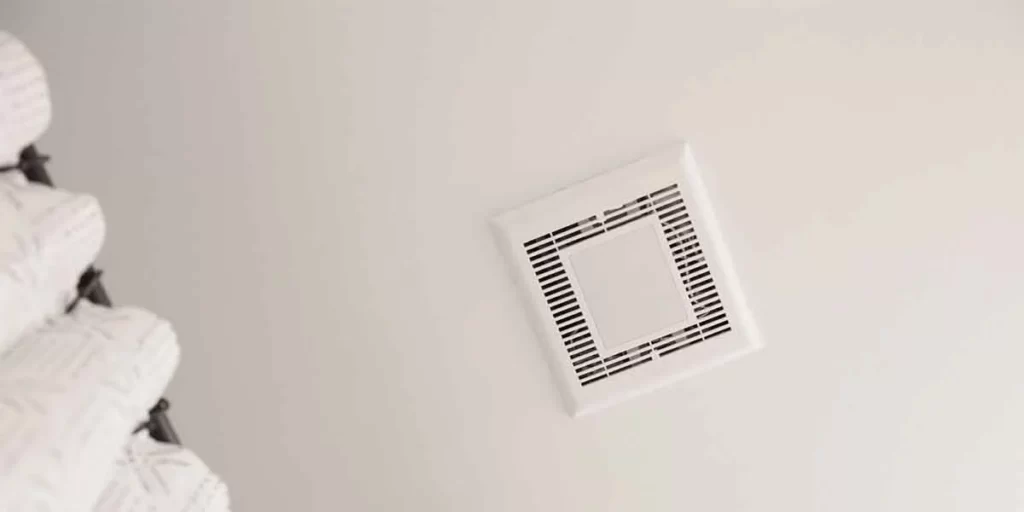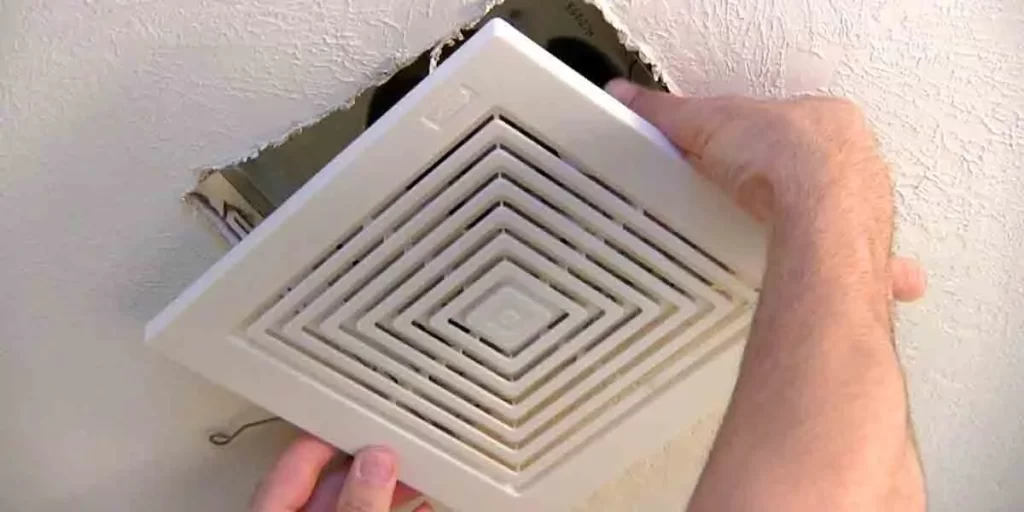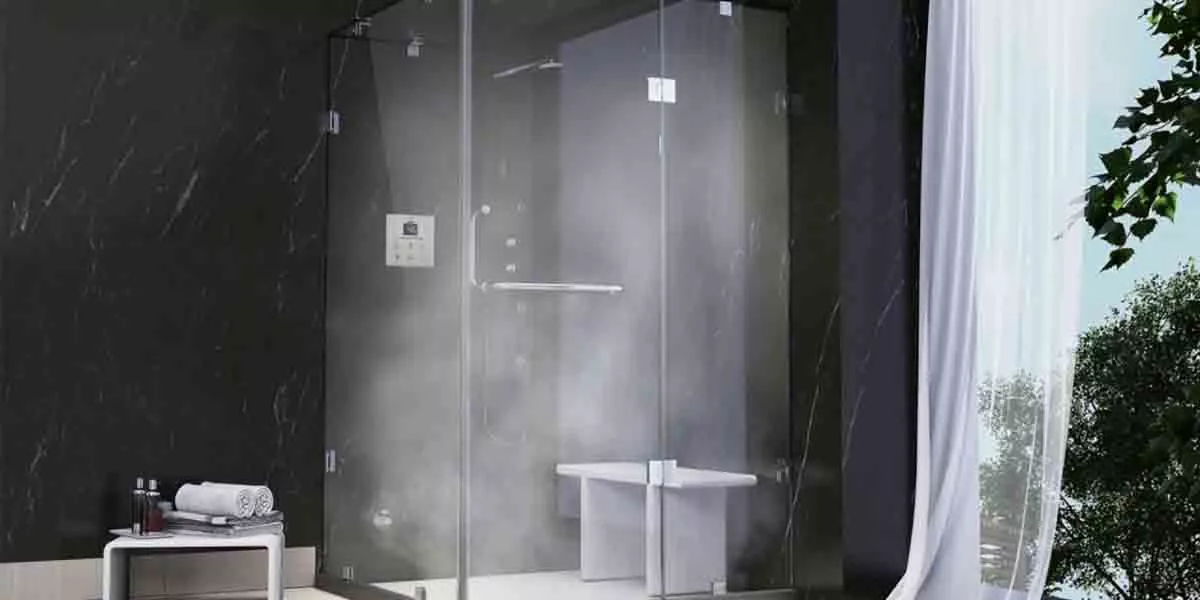A bathroom fan is supposed to remove the steam from the shower, but sometimes it doesn’t seem to work properly. Most of the problems with excess humidity or moisture are a result of not running your bathroom fan long enough or using the ventilator in the wrong way.
It is important to troubleshoot these issues to ensure that the fan is working properly and preventing moisture damage in the bathroom.
By following the tips provided in this article, you can help ensure that your bathroom fan is effectively removing steam and moisture from the room. Let’s dive in!
8 Reasons Why Bathroom Fan Is Not Removing Steam

1. Bathroom Fan Is Not Powerful Enough
If you have a small bathroom, you might need to upgrade to a higher-powered aerator to remove the steam. You can carry out a simple CFM calculator that shows the minimal CFM that your bathroom should have.
According to the Home Ventilating Institute, the calculation should be based on the size of your bathroom and eight air changes per hour.
You can compare the number you get with your bathroom fan’s CFM rating. It is good to go for a shower exhaust ventilator with a higher CFM than that from your calculations.
2. Not Using the Fan in Right Way
Bathroom fans are meant to be used in conjunction with the exhaust ventilator to remove all of the humidity from the room.
If you just use the shower ventilator without using the exhaust air cooler, you might still have some moisture in the air. Moreover, you can also install a humidity sensor switch that will automatically activate the fan when it senses moisture.
To use the fan the right way, make sure that you have it installed in the correct spot and properly ventilated.
3. Bathroom Fan Is Not Running
This problem is self-explanatory.
Make sure that your bathroom fan turns on and off when needed. If it doesn’t, try cleaning the wiring and get a new switch that will run the fan automatically.
To access the ventilator’s wiring system, simply remove the grille, and you will find where to access it. Make sure that the wiring is as secure as possible.
A loose wire can cause sparks which will send smoke into your home, damaging anything flammable that gets too close. If you’re not sure what you’re doing with electrical work, don’t do any of it yourself, call a professional!
If your bath fan doesn’t have a grill over it, then it can’t push out as much moisture. Replacing or adding a grill might be all you need to do before having an uninterrupted steam bath without any shame.
4. Wrong Kind of Ventilation
If you are using an unvented bath or shower, then there is no source to remove any moisture from the room, so all of it will remain in the moisture and cause condensation problems.
You can fix this by making sure you use a vented enclosure for your shower or bath at least. The humidity can be vented through a wall, ceiling vent, or window with a grille outside.
When you close these vents in winter, make sure you have humidistat-operated bath fans to control the humidity levels in your shower.
5. Fan Installed In the Wrong Place
If your shower room is too small and your fan is in the wrong spot, it might not be able to remove all of the steam from the room.
See Also: Tips for Positioning a Bathroom Vent Fan
6. Using the Wrong Type of Fan
Not all fans are meant for bathrooms. Make sure you get a bathroom fan specifically designed for use in bathrooms, as they are made to handle high humidity levels. Additionally, make sure the fan is rated for the size of your bathroom.
How to Identify the correct type of fan for your bathroom?
To identify the correct type of fan for your bathroom, check the size of your bathroom. Bathrooms that are larger than 100 sq. feet will require a more powerful ventilator.
Look for the Bathroom Fan Efficiency Rating (BFER) on the product packaging or on the fan itself. The higher the rating, the more power the fan has to remove humidity.
Choose a bath fan with a built-in humidistat to automatically turn the bathroom fan on and off as needed.
7. Bathroom Fan Blades Are Dirty
If the bathroom fan’s blades are dirty, they won’t be able to move as much air. It is recommended to clean fan blades at least once a month to make sure they operate as efficiently as possible.
To clean your fan blades, you will need a pencil. Use the pencil to clean the dirt off your blades, and then put some soap on a paper towel or cloth and wipe them down with that.
8. Ensure Enough Ventilation In Your Home
It might sound strange, but it is worth mentioning it anyway.
If you don’t have enough ventilation in your home, then the humidity levels will be high, causing problems with excess moisture.
To allow the air to circulate properly, install an appropriate number of vents in your house – not just in your bathroom. This is a problem that is often overlooked but can be easily fixed.
Recommended: Improving Ventilation in Your Home
How to Test/Fix Broken Bathroom Fan Not Removing Steam?

I have already mentioned some of the reasons why your exhaust fan is not working and now, here is how to fix it:
Test Your Bathroom Fan
If your circuit breaker is reset, the GFCI is reset, the switch is working and the motor is oiled and cleaned and not burnt, it may not be a problem with your shower exhaust fan.
Do the following simple test to check if there is anything wrong with your exhaust system:
- Test for Voltage At the Switch
Remove the grate and clean it thoroughly so every surface has a smooth finish. Use a metal brush or toothbrush to clear out all dirt and residue from inside of the fan, this will help it run smoothly even when moisture accumulates in the unit.
You should also wipe down its exterior with a damp cloth to remove any dust or grime that might interfere with its operation.
Replace the housing and cover over everything, then turn on your circuit breaker and GFCI (if applicable). Turn your exhaust ventilator on by flipping its switch to the “on” position and check if it’s working properly.
If everything seems to be in order, then the problem might be with your venting system.
Checking the Venting System
There are a few things you can do to check if there is something wrong with your shower-room exhaust fan’s venting system:
- Inspect the roof for damage and make sure the flashing around the fan is intact and sealed properly.
- Make sure the roof vents are clear of any obstruction such as bird’s nests, leaves, or snow.
- If your home has more than one story, make sure the fan is connected to the correct vent and that it’s not blocked by any insulation.
- If there are multiple showers or rooms with exhaust ventilators, use a moisture meter to check for any humidity buildup in the rest of your home.
If you have followed these measures and the bathroom fan is still not working properly, it’s time to call an expert.
You can look online or ask family and friends about reliable mechanics they know who can fix your broken shower-room exhaust aerator before it causes more serious damage.
What Should You Consider Before Buying A Bathroom Fan?

There are many brands that design bathroom exhaust fans. Coming up with the best type can be challenging. However, there are some factors worth considering when buying the perfect shower ventilator.
Below are factors to consider when buying a bathroom fan:
Size of the Room
Before buying a bathroom fan, it is necessary to know the size of the installation room. It helps select an appropriate ventilator that can effectively remove humidity and bad odor from the room.
Type of Ventilator
There are two types of bathroom fans: ceiling-mounted and wall-mounted.
Wall-mounted fans are usually small and compact and ideal for bathrooms with limited space. On the other hand, Ceiling-mounted fans are larger and more powerful than wall-mounted ones. They are perfect for larger shower rooms.
Noise Level
It is important to choose a bathroom fan that does not produce a lot of noise. Ventilators with a rating of fewer than 50 decibels are usually considered quiet.
Price
Bathroom fans vary in price, depending on their features. It is important to set a budget before buying one. However, it is important to note that it is worth investing in a quality ventilator that will last for a long.
Warranty
It is important to buy a fan with a good warranty. It will protect the buyer in case of any defects or problems with the fan in the future.
Related Posts




